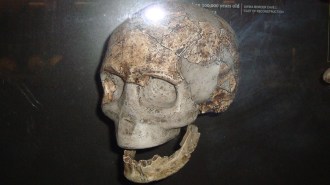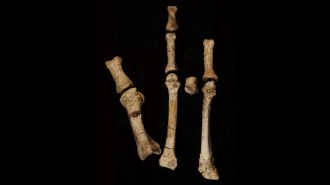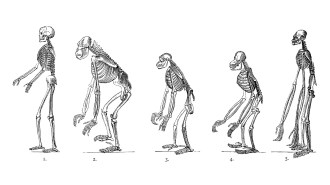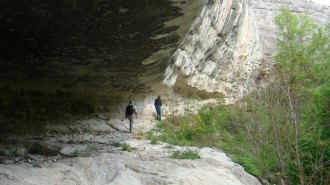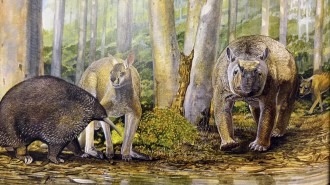Ancient people get dated Down Under
Estimates of ages for two human skeletons excavated at Lake Mungo in southeastern Australia have ranged from 60,000 to 20,000 years old. Results of new dating analyses, confirmed at four laboratories, split that difference. The Lake Mungo individuals were buried roughly 40,000 years ago, according to James M. Bowler of the University of Melbourne and his colleagues.
The new evidence also indicates that people first settled the Lake Mungo area between 50,000 and 46,000 years ago, soon after the arrivals of humans in northern and western Australia, Bowler’s group reports in the Feb. 20 Nature. Soil investigations conducted by the same researchers suggest that the water level in the lake fluctuated sharply from 50,000 to 40,000 years ago. The area then succumbed to drought for the next 10,000 years, forcing prehistoric people to adapt to a parched locale.
Dating of the Lake Mungo finds hinged on a technique for measuring radiation emanating from quartz grains in various levels of the archaeological deposits. Radiation accumulates at a known rate in buried minerals.
****************
If you have a comment on this article that you would like considered for publication in Science News, please send it to editors@sciencenews.org.


